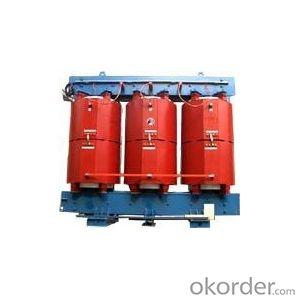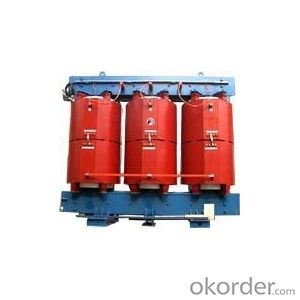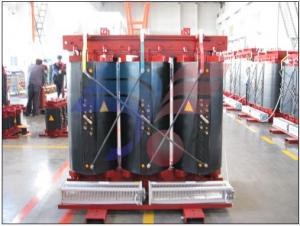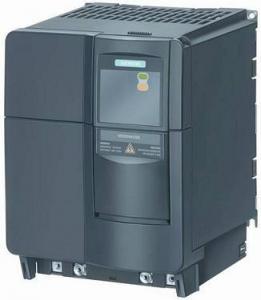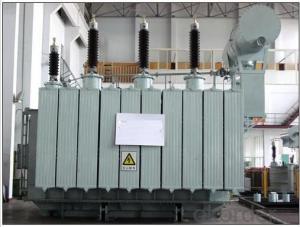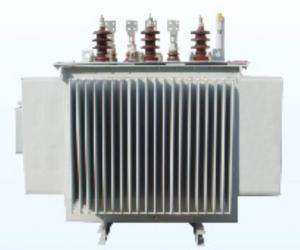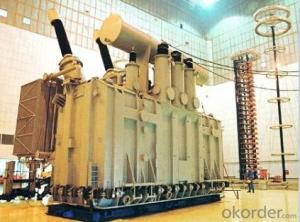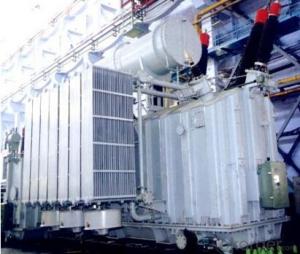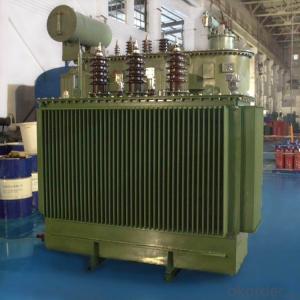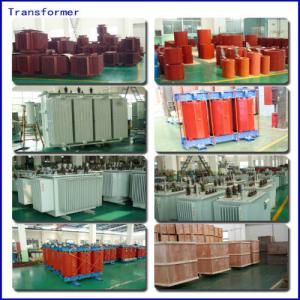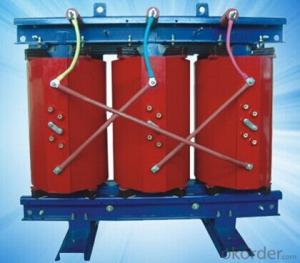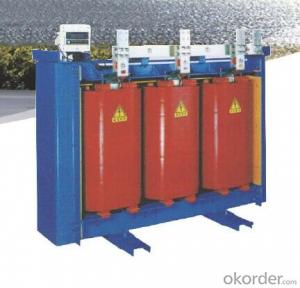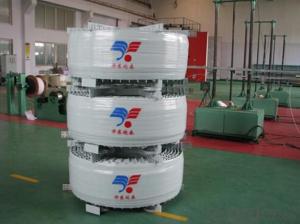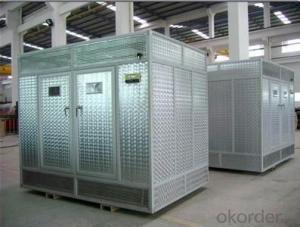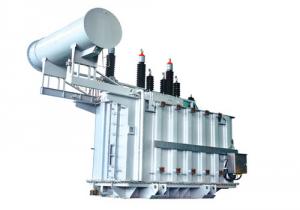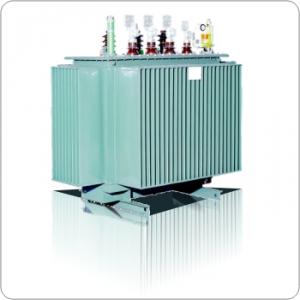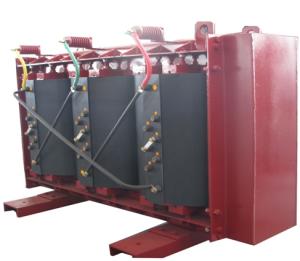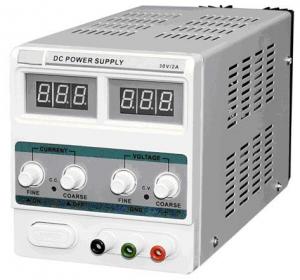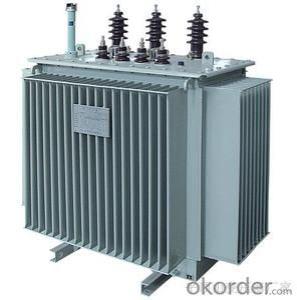Dry-Type Power Transformer
- Loading Port:
- Shanghai
- Payment Terms:
- TT OR LC
- Min Order Qty:
- -
- Supply Capability:
- 1000sets set/month
OKorder Service Pledge
OKorder Financial Service
You Might Also Like
1.Product description
SC(B)10 resin-insulated dry-type transformer is designed basing on the Dupont(the USA) NOMEX paper insulation system. the other key components are made from imported materials (such as german MKM copper foil). with advanced manufacturing equipment and technology, the product enjoys high performance, low energy loss, safety and reliability, its especially suitable for high buildings, airports, substations and commercial centers, and any other anti-fire, anti-explode, anti-moisture places etc.
2.Specification
| Type | Rated current | Voltage combination(KV) | Connection | No-load | Loss(W) | Impedance (%) | ||
|---|---|---|---|---|---|---|---|---|
| (A) | HV | LV | symbol | current(%) | No-load | load | ||
| SC10-30 | 1.73/43.3 | 6±2.5% 6±5% 10±2.5% 10±5% 10.5±2.5% 10.5±5% 11±2.5% 11±5% | 0.4 | Dyn11 Yyn0 | 2.5 | 190 | 700 | 4 |
| SC10-50 | 2.89/72.2 | 2.2 | 270 | 990 | ||||
| SC10-80 | 4.62/115.5 | 2.1 | 370 | 1380 | ||||
| SC10-100 | 5.77/144.3 | 1.9 | 400 | 1570 | ||||
| SC10-125 | 7.22/180.4 | 1.7 | 470 | 1840 | ||||
| SC10-160 | 9.24/230.9 | 1.7 | 540 | 2120 | ||||
| SC10-200 | 11.6/288.7 | 1.5 | 620 | 2520 | ||||
| SC10-250 | 14.43/360.8 | 1.5 | 720 | 2750 | ||||
| SC10-315 | 18.19/454.7 | 1.3 | 880 | 3470 | ||||
| SC10-400 | 23.09/577.4 | 1.3 | 980 | 3990 | ||||
| SC10-500 | 28.9/721.7 | 1.3 | 1160 | 4880 | ||||
| SC10-630 | 36.4/909 | 1.2 | 1340 | 5870 | ||||
| SC10-630 | 36.4/909 | 1.2 | 1300 | 5960 | ||||
| SC10-800 | 46.2/1154.7 | 1.2 | 1520 | 6950 | 6 | |||
| SC10-1000 | 57.7/1443.4 | 1 | 1770 | 8130 | ||||
| SC10-1250 | 72.2/1804.3 | 1 | 2090 | 9690 | ||||
| SC10-1600 | 92.4/2309 | 1 | 2450 | 11730 | ||||
| SC10-2000 | 115.5/2886.7 | 0.9 | 3320 | 14450 | ||||
| SC10-2500 | 144.3/3608.4 | 0.9 | 4000 | 1717 | ||||
- Q: 800KVA transformer itself is the loss of how much?
- S9 type oil change 800kVA Calculation results: no-load loss 1400 watts load load loss of 7500 watts. Calculation formula of transformer loss (1) active loss: ΔP = P0 + KTβ2PK ------- (1) (2) Reactive power loss: ΔQ = Q0 + KTβ2QK ------- (2) (3) Integrated power loss: ΔPZ = ΔP + KQΔQ ---- (3) Q0 ≈ I0% SN, QK ≈UK% SN Where: Q0 - no load reactive power loss (kvar) P0 - No load loss (kW) PK - rated load loss (kW) SN - transformer rated capacity (kVA) I0% - transformer no-load current percentage. UK% - short circuit voltage percentage Β - average load factor KT - load fluctuation loss coefficient QK - rated load leakage power (kvar) KQ - Reactive power equivalent (kW / kvar) Selection of the parameters of the above formula: (1) take KT = 1.05; (2) The reactive power equivalent KQ = 0.1kW / kvar when the 6kV ~ 10kV step-down transformer of the urban power grid and industrial enterprise power grid adopts the minimum load, (3) the average load factor of the transformer, for agricultural transformer desirable β = 20%; for industrial enterprises, the implementation of three shifts, desirable β = 75%; (4) transformer operating hours T = 8760h, the maximum load loss hours: t = 5500h. (5) transformer no-load loss P0, rated load loss PK, I0%, UK%, see the transformer signs shown.
- Q: A single phase transformer operates from a 230V supply. The primary and secondary resistances are 0.03 Ω and 1.12Ω respectively while the corresponding leakage reactances are 0.1Ω and 6.4Ω; the magnetising branch can be neglected. The secondary winding has four times as many turns as the primary. Calculate :i) The equivalent impedance referred to the primary circuitii) The secondary terminal voltage when the load has a resistance of 200Ω and an inductive reactance of 100Ω.iii) The secondary terminal voltage when the load has a resistance of 200Ω and a capacitive reactance of 100Ω.Can someone show me how to tackle this question please?
- i) the secondary transformer impedance is 1.12 + j6.4Ω. Since Ns/Np 4, this impedance reflected to the input is (1.12 +j6.4Ω)/(Np/Ns)? 007 + j0.4Ω ii) Reflect the primary transformer voltage and impedance to the secondary side. 230(Ns/Np) (1.12Ω + j6.4Ω + (Ns/Np)?(0.03Ω + j0.1Ω ) +200Ω + j100Ω )I 920 (1.6 +200 + j8 +j100)I (201.6 + j108)I |Z| 228.7Ω √(201.6? + 108?) at angle of inverse tan (108/201.6) 28.18° I 4.02 amps at -28.18° 3.54 - j1.90 amps The terminal voltage is 920 - (1.6Ω +j8Ω)(3.54 - j1.90 amps) iii) solve 920 (1.6Ω +200Ω + j8Ω - j100Ω)I (201.6Ω - j92Ω)I The terminal voltage is 920 - (1.6Ω + j8Ω)I
- Q: i took it out. on one side of the transformer i have a black and a red im hooking those up to a battery on the other side i have five wires 2 red, 2 white, and 1 blue i dont know what these do or how to get current to them. does anyone know how to complete the circuit???
- You are trying to duplicate the Kettering ignition. Momentarily touching a battery to the lowest ohmage winging will usually get you a spark from one or more of the other windings. The old (my era) radios had a secondary to produce high voltage 400-600 volts (often centertapped) and a filament winding 5-6 volts. You would touch the battery to the filament winding and get the spark from the 4-6 hundred volt winding. If you used 110 volts ac on the black and red wires you would get a continuous 4-6 hundred volts AC from the secondary winding with enough amperage to kill someone.
- Q: I need a flyback transformer for some plasmatastic experiments. I know a place where someone dumped a bunch of broken TVs and computer monitors. Where should I be looking for a flyback transformer in this stuff and what can it look like?thanks
- The frequency of an ac power supply is only 60 hz. That's way too low for a flyback. The resistance of a transformer depends on the frequency. At 60Hz a flyback transformer acts like a short circuit. It would draw a lot of power, might damage the power supply and nearly nothing would come out the other side of the transformer.
- Q: I'm building a ark welder and i know they get very hot, iv seen some people in ''the internet'' submerging their transformers in transmission fluid to keep em cool under excessively heavy work loads.My question is what effects does oil have on wire insulation?And what about the transformer varnish and core insulation wads and paper?
- Transformers can be submerged in oil like the oil cooled transformers.The transformer varnish, cfore and paper can withstand transformer oil. Just use a clean transformer oil.
- Q: I'll be going to Peru for 2 weeks and I was wondering if I could plug in my electronics over there. I read that they have both North American and European outlets and the voltage is 220 V and 60 Hz. My iPod wall charger and phone charger say 100~240 V (and my laptop charger says 100-240 V) and 50/60 Hz. Would I need to buy a transformer while I'm there so my stuff doesn't get all burnt out?
- no you dont need to. its pretty much the same w electronics over there.
- Q: I'm a student in high school in a basic physics class. My teacher assigned a report and presentation about electric transformers(because its not in our textbooks), but the information i get from websites is too complicated for me to understand.(ie wikipedia) Is there a website where i can get thorough info that is easy to understand?
- $20 at most big electronics retailers, within 500 watts larger transformers can be up to $100 to 2000 watts.
- Q: Can a transformer be used with dc? what happens is a transformer designed for 120v ac is connected to a 120 v dc line?
- No, it can't. If it is connected to 120VDC, the output will give an initial pulse that decays to zero and stays there. The input will draw far more current than designed, overheat, and either open up or catch on fire. Here is how a transformer works with AC: The input winding generates a magnetic field (because it is an electromagnet). The field alternates because the applied current alternates. The alternating magnetic field couples into the output winding where it induces an electric voltage that alternates because the magnetic field is alternating. Now here's the kicker. The voltage induced in the output winding is proportional to the rate of change of the fluctuating magnetic field. If the field is static (ie, steady, as is the case if the input winding is powered by DC), then the rate of change is zero and the induced voltage is zero. That's why the transformer can't transform DC. Other interesting facts: The input winding converts electrical energy into energy in the magnetic field that is then converted back into electrical energy in the output winding. The input winding resists DC current based on the winding's resistance. If the input current is alternating, then it resists the current additionally based on the inductance of the winding, and the higher the frequency, the more it resists. A transformer is designed to work on a specific frequency (eg, 50Hz or 60Hz). Operating it at 0Hz (DC) will allow too much current to flow. The higher the applied frequency, the more power the transformer can transfer. Think of it as though the transformer passes a bucket of energy from input to output on each cycle. The more cycles per second, the more energy per second, aka the more power. At 0Hz (DC), it isn't passing any buckets of energy. Hope that helps.
- Q: I LOVE TRANSFORMERS. From the box car days to beast wars. I played ROTF when it came out, it was pretty cool. Then WFC, epic. Now I'm wondering if I should get Dark of the Moon. I don't wanna get it and find out that people don't even play online. Or come to find out that this game is super weak and such. I just like the feeling of attacking then transforming into a jet (Starscream) and flying away. For you transformer fans, is this game a buy or Spend that money on another game situation? Tips and suggestions would be nice. Thanks!
- I say don't do it. Too many times, I've played a movie/TV-based game and it sucked even when the movie was awesome. (Spiderman 3, Avatar, Avatar: The Last Airbender, Star Wars: The Force Unleashed, etc) Just don't do it
- Q: From the following transformer, how would I calculate:a) the equivalent impedance on the low-voltage sideb) Converting the impedance found in (a) to it's per-unit quantities
- a) the turns ratio of the transformer is 20 to1 so to refer an HV side impedance to the LV side you divide it by the square of the turns ratio which in this case is 400 which gives: 0.001+j0.00025 ohms. b) There's a certain amount of freedom in doing this for you may define the per-unit impedance base however you want. It is however rather usual to define it as VA / I^2. Here I 5000/2400 2.083 amps So base impedance HV side 5000/2.83? 624 ohms making the given impedance (0.4+j0.1)/624 p.u. This p.u. value should be the same on either side of the transformer. Nice to see you around again but do I notice you haven't improved at saying please when you want someone to do something for you for nothing. If you can't learn that there's not much use in learning all these technical skills. You're going to remain a clumsy oaf!
Send your message to us
Dry-Type Power Transformer
- Loading Port:
- Shanghai
- Payment Terms:
- TT OR LC
- Min Order Qty:
- -
- Supply Capability:
- 1000sets set/month
OKorder Service Pledge
OKorder Financial Service
Similar products
Hot products
Hot Searches
Related keywords
